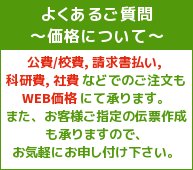Human and Animal Relationships, 3 Ed.
出版済み 3週間でお届けいたします。
Series: The Mycota, Vol.6 Author: Peter Zipfel; Olaf Kniemeyer; Axel A. Brakhage Publisher: Springer ISBN: 9783031648526 Cover: HARDCOVER Date: 2024年12月 DESCRIPTION Estimates based on sequencing data suggest that there are around 5.1 million species of fungi. Yet only a small number of fungi are harmful to animals, including humans. In addition to host-pathogen interactions, there are also mutualistic interactions between fungi and animals. Diseases caused by pathogenic fungi range from allergic reactions and superficial infections to invasive mycoses, and have a significant impact on human and animal life. Fungi are also cultivated by animals as a food source in highly developed relationships or are even involved in gut mutualism. This 3rd edition of Volume 6 of The Mycota highlights exemplary interactions between fungal pathogens and their host(s). The book is organized in three parts: * Part 1 summarizes our current understanding of important pathogenic fungi such as Candida species, Malassezia yeasts, Aspergillus fumigatus and fungi of the order Mucorales. * Part 2 addresses the characterization of the host response towards pathogenic fungi. It focuses on RNA as a mediator of host-pathogen interactions, the human gut mycobiome, the role of the innate immune system in fighting infections, pattern recognition receptors involved in fungal infections, and a summary of established infection models for studying host-fungal-pathogen interactions. * Part 3 provides insights into the impact transcriptomics and proteomics technologies have on the research of human-pathogenic fungi. The up-to-date reviews by experts in the field provide the reader with a comprehensive overview of the various research topics in the field of human and animal relationships with fungi and will hopefully help researchers to find inspiration for their own research. TABLE OF CONTENTS Part I. Pathogens Chapter 1. Trinity of Environment, Animals, and Humans: A Resume in the Case of the Fungal Order Mucorales Chapter 2. Pathogenicity Strategies of Candida Species During Interaction with Epithelial Cells Chapter 3. Malassezia Yeasts in Animals in the Next-Generation Sequencing Era Chapter 4. Extracellular Proteins and Their Roles in Aspergillus Fumigatus Pathogenesis Part II. Host-Pathogen Interaction Chapter 5. RNA as a Mediator of Host-Fungal Pathogenesis Chapter 6. The Human Gut Mycobiome and Its Potential as a Regulator of the Host’s Metabolic Health Chapter 7. The Host Innate Immune Response to Pathogenic Candida Albicans and Other Fungal Pathogens Chapter 8. Mammalian Pattern Recognition Receptors (Prrs) Involved in Recognition of Fungi Chapter 9. Infection Models for Human Pathogenic Fungi Part III. Techniques Chapter 10. Transcriptomic Analyses of Host Colonisation in Fungal Pathogens of Humans Chapter 11. Proteomics and Its Application to the Human-Pathogenic Fungus Aspergillus Fumigatus 最近チェックした商品

|
||||||||||||||||||||||||||||||||||||||||||||||||

























